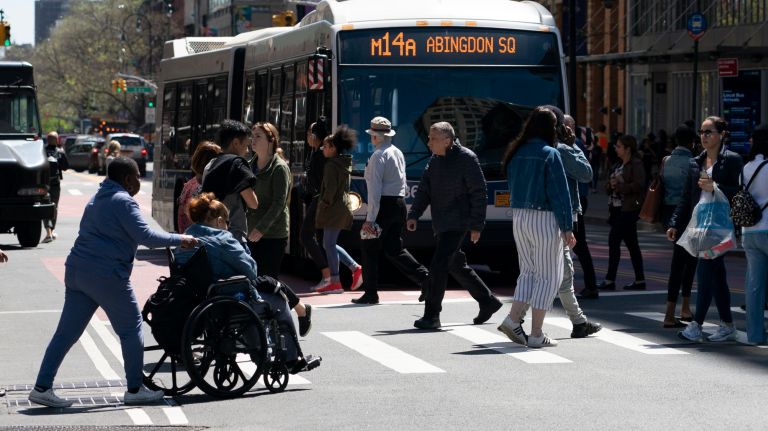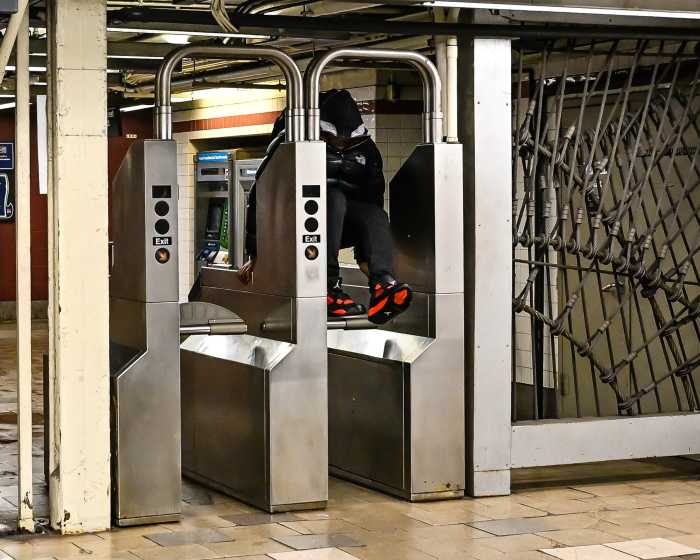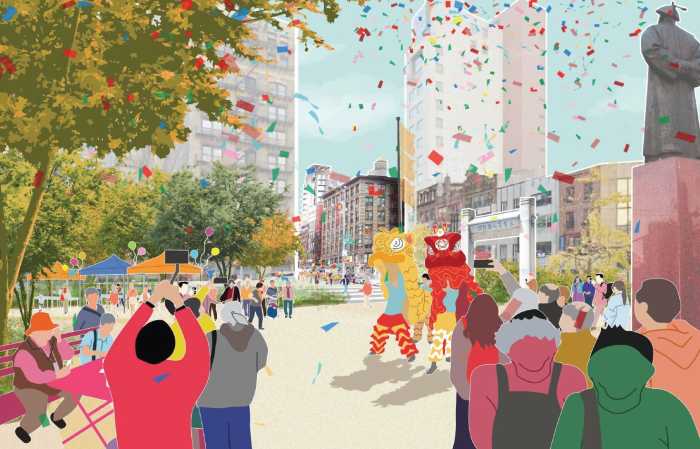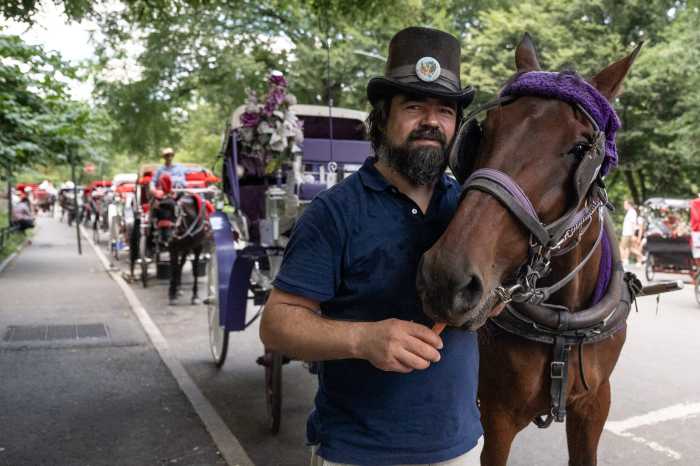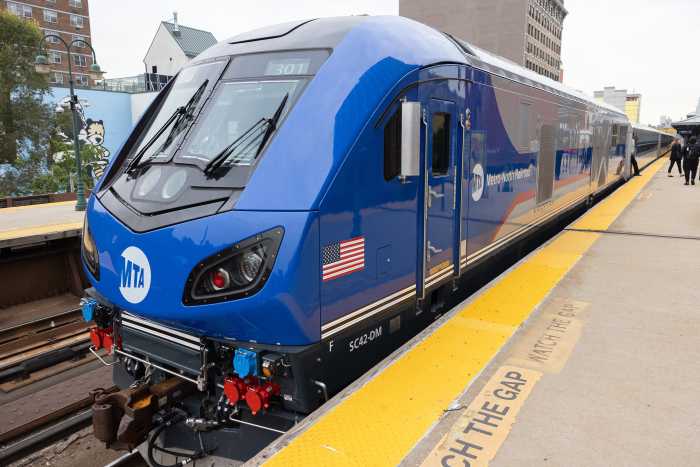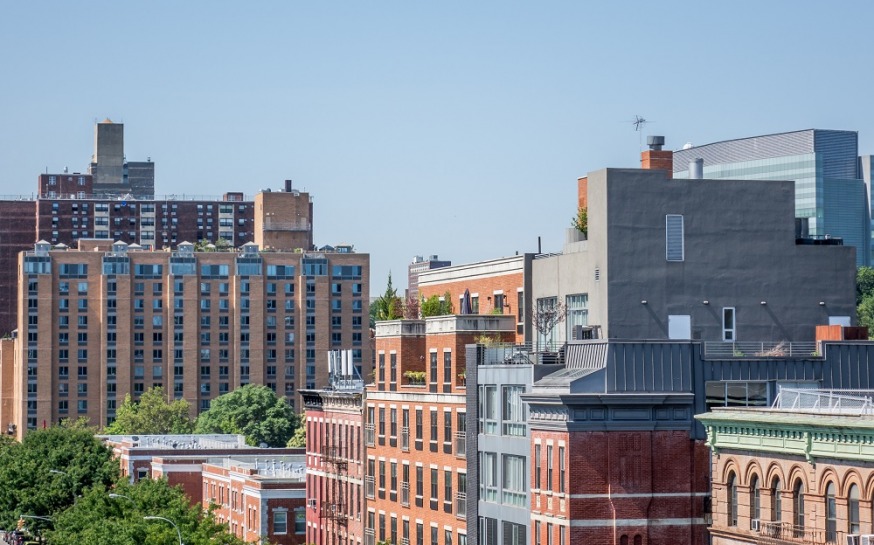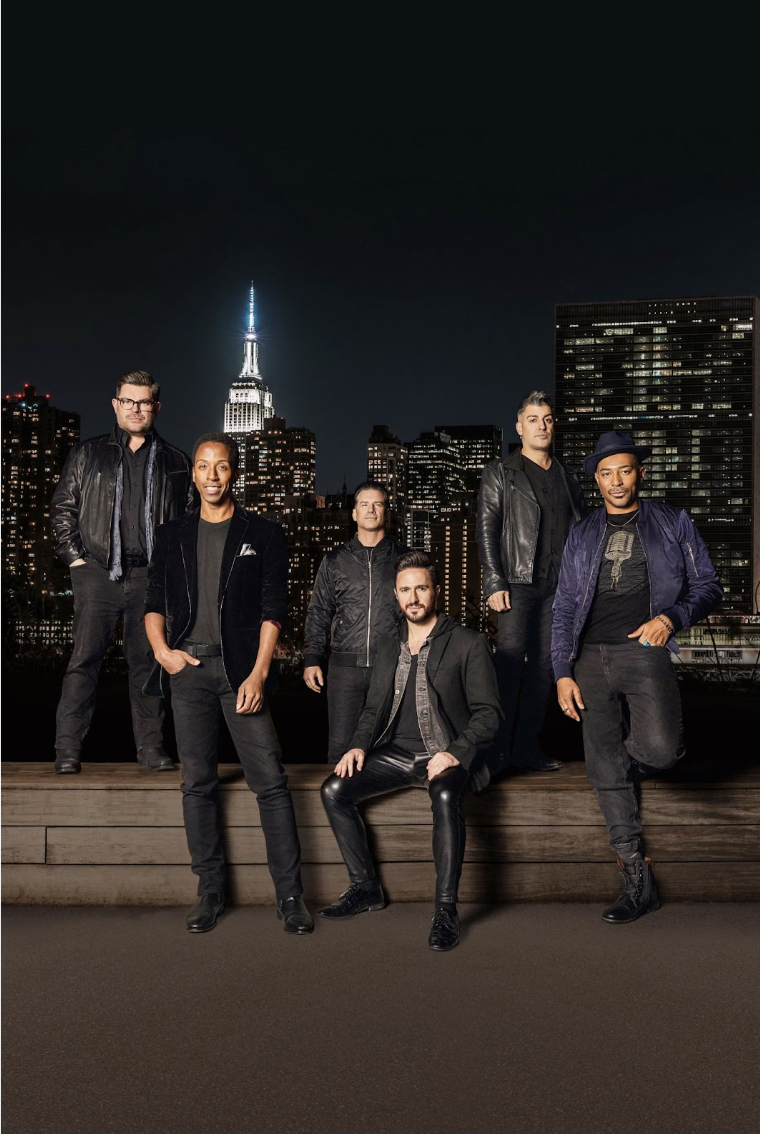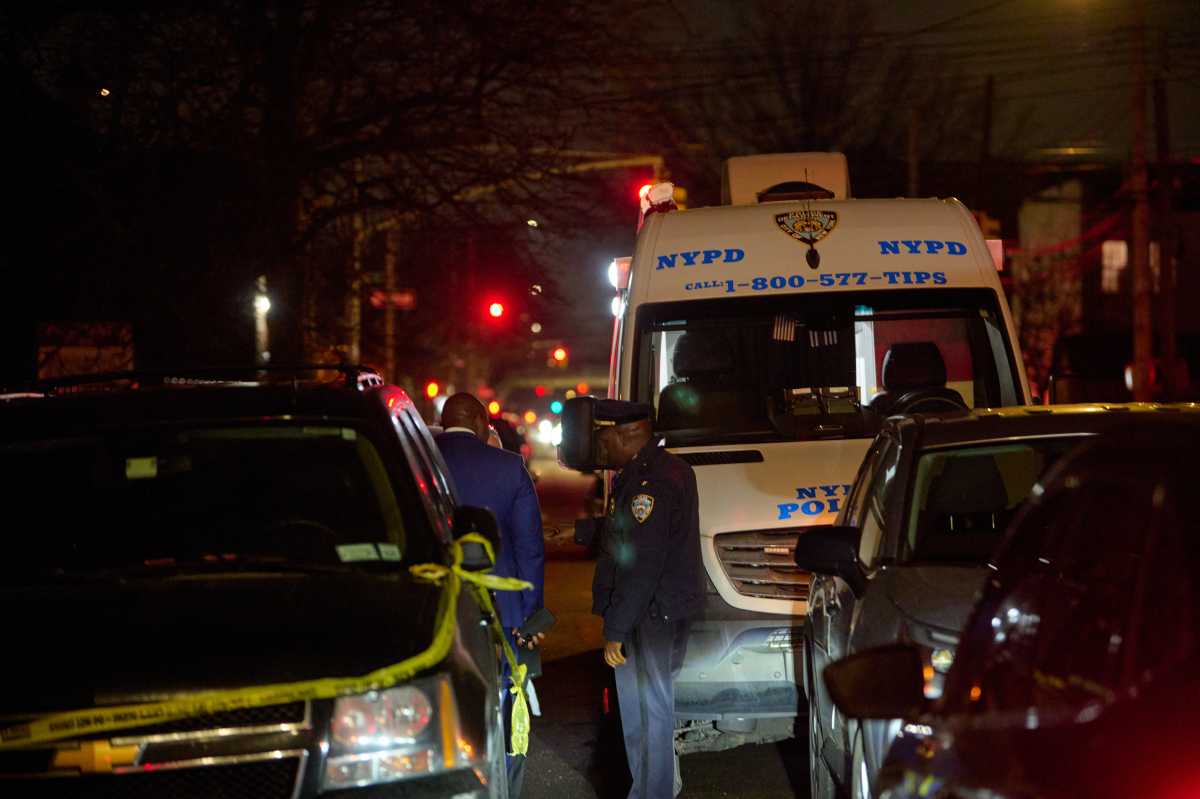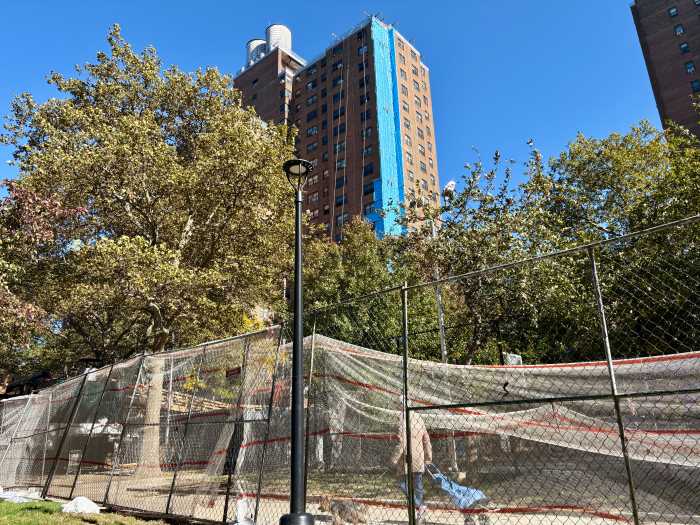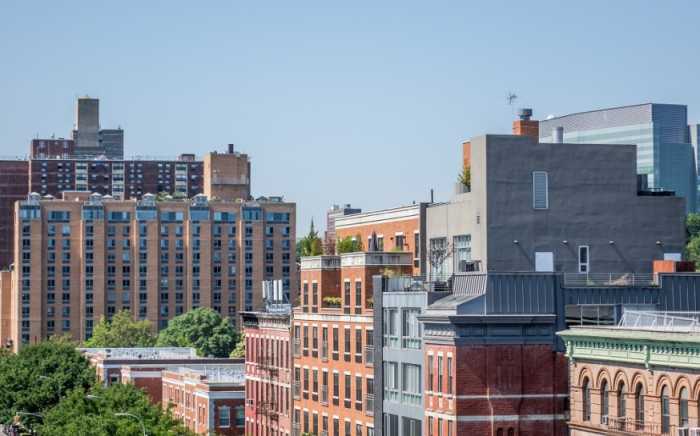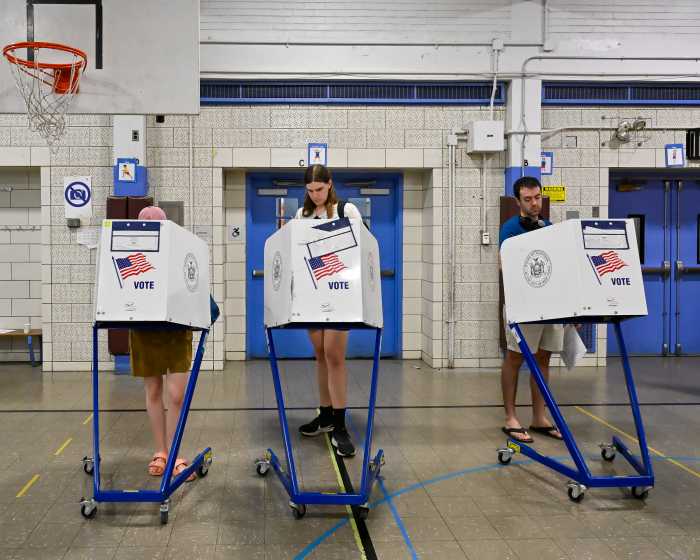
The city’s 14th Street busway will launch July 1, bringing new vehicle restrictions to help speed up transit on the busy Manhattan block, the DOT announced Monday.
Private through-traffic will be banned between 6 a.m. and 10 p.m. on 14th Street between Third and Ninth avenues to allow the pilot of a new bus-centric street design during the L train’s Canarsie tunnel reconstruction.
While the plans for the busway were announced in April, the Department of Transportation had not previously disclosed a launch data or hours of operation. DOT Commissioner Polly Trottenberg said at the time that the city was still hashing out the most effective hours for the vehicle restrictions on 14th Street, which runs directly above the L train’s route in Manhattan.
The busway will also bring the launch of the new M14 Select Bus Service, which will include off-board fare payments, all-door boarding and the elimination of 16 stops to help keep buses moving.
Hours were settled on after reviewing current M14 speeds and ridership trends, according to the DOT. Ridership on the route spikes significantly around 6 a.m. — just as traffic slows bus speeds — and gradually tapers off in the evening hours.
The current M14 A and M14 D routes have an average speed of about 3.8 miles per hours — just a bit faster than the average human walking speed of 3.1 miles per hour and much lower than the citywide bus average of 7.4 miles per hour.
The busway has drawn pushback from some locals concerned about traffic spilling over to other side streets and others worried about the elimination of certain bus stops. Concessions were made on both fronts, but the MTA and city tout that SBS treatments work, improving travel time between 10% and 30%. Citywide SBS routes are about 27% faster than other local or limited-stop bus routes.



